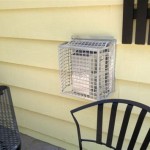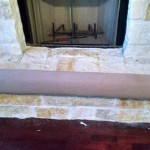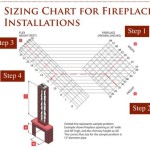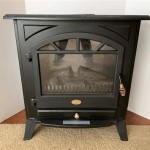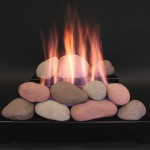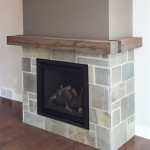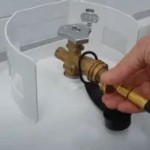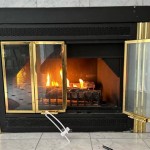Ventless Propane Gas Fireplace Inserts: A Comprehensive Overview
Ventless propane gas fireplace inserts represent a modern solution for adding ambiance and supplemental heat to a home. Unlike traditional wood-burning fireplaces or vented gas fireplaces, ventless models do not require a chimney or flue, offering greater installation flexibility. This article provides a comprehensive overview of ventless propane gas fireplace inserts, covering their functionality, benefits, safety considerations, installation, and maintenance.
A ventless propane gas fireplace insert is a self-contained heating appliance designed to be installed within an existing fireplace opening or a specially constructed enclosure. These inserts utilize propane gas as their fuel source and are engineered to burn the gas so efficiently that minimal byproducts are released into the living space. The absence of a venting system allows for almost all of the heat generated to be directed into the room, resulting in higher energy efficiency compared to vented alternatives.
The primary purpose of a ventless propane gas fireplace insert is to provide supplemental heating and create a visually appealing focal point in a room. They are often chosen for their ease of installation, relatively low cost, and ability to be operated without the need for extensive construction or modifications to the existing structure of a home. Furthermore, the convenience of propane gas, which can be delivered and stored on-site, makes them an attractive option for homeowners who do not have access to natural gas or prefer an alternative fuel source.
Key Benefits of Ventless Propane Gas Fireplace Inserts
Numerous benefits contribute to the growing popularity of ventless propane gas fireplace inserts. These advantages range from ease of installation to cost-effectiveness and energy efficiency, making them a viable option for many homeowners.
Simplified Installation: One of the most significant advantages is the simplified installation process. Because they do not require a chimney or vent, installation is generally less labor-intensive and less expensive than installing a vented fireplace. This translates to lower upfront costs and reduced disruption to the home during the installation process. The insert simply slides into the existing fireplace opening, and the propane gas line is connected. In some cases, minor cosmetic modifications may be necessary to ensure a seamless fit, but the overall process remains relatively straightforward.
Energy Efficiency: Ventless fireplaces are renowned for their high energy efficiency. Unlike vented models, which lose a significant portion of heat through the chimney, ventless fireplaces direct almost all of the heat generated into the room. This can translate to lower heating bills, particularly when the fireplace is used as a supplemental heat source in a specific area of the home. The efficiency is achieved through the complete combustion of the propane gas, minimizing waste and maximizing heat output.
Cost-Effectiveness: The overall cost of owning and operating a ventless propane gas fireplace insert can be relatively low compared to other heating options. The initial purchase price is often competitive, and the simplified installation process further reduces expenses. Moreover, the energy efficiency of these inserts translates to lower fuel consumption and reduced heating costs over the long term. The availability of propane gas, which can be purchased in bulk and stored on-site, also provides homeowners with greater control over their fuel expenses.
Aesthetic Appeal: Ventless propane gas fireplace inserts are available in a wide variety of styles and designs, allowing homeowners to choose a model that complements their existing décor. From traditional log sets to contemporary glass media, there are options to suit virtually any aesthetic preference. The realistic flame patterns and glowing embers create a cozy and inviting atmosphere, enhancing the ambiance of the room.
Convenience: The convenience of operating a ventless propane gas fireplace insert is another significant advantage. Most models are equipped with user-friendly controls, such as remote controls or thermostats, which allow homeowners to easily adjust the flame height and heat output. The propane gas supply can be replenished as needed, ensuring a continuous source of heat without the need for constant refueling, as is the case with wood-burning fireplaces.
Safety Considerations for Ventless Propane Gas Fireplace Inserts
Safety is paramount when considering any heating appliance, and ventless propane gas fireplace inserts are no exception. While these appliances are designed to operate safely, it is crucial to understand the potential risks and take appropriate precautions.
Carbon Monoxide Risks: The primary safety concern associated with ventless propane gas fireplace inserts is the potential for carbon monoxide (CO) buildup. Carbon monoxide is a colorless, odorless gas that can be fatal if inhaled in high concentrations. While ventless fireplaces are designed to burn propane gas efficiently, incomplete combustion can occur, leading to the production of CO. Therefore, it is essential to install a functioning carbon monoxide detector in the room where the fireplace is located and to regularly inspect and maintain the appliance to ensure proper combustion.
Oxygen Depletion: Ventless fireplaces consume oxygen during the combustion process, which can potentially deplete the oxygen levels in the room, especially in tightly sealed spaces. To mitigate this risk, it is recommended to ensure adequate ventilation in the room, either through open windows or a ventilation system. Many ventless fireplaces are equipped with oxygen depletion sensors (ODS), which automatically shut off the gas supply if the oxygen levels in the room drop below a certain threshold.
Proper Installation and Maintenance: Proper installation and regular maintenance are critical for ensuring the safe operation of ventless propane gas fireplace inserts. Installation should be performed by a qualified technician who can ensure that the appliance is properly connected to the propane gas supply and that all safety features are functioning correctly. Regular maintenance, including cleaning the burner and inspecting the gas lines, is essential for preventing malfunctions and ensuring efficient combustion.
Manufacturer's Instructions: It is imperative to carefully read and follow the manufacturer's instructions for installation, operation, and maintenance. These instructions provide specific guidance on the safe use of the fireplace and should be followed diligently to prevent accidents or malfunctions. Failure to adhere to the manufacturer's instructions can void the warranty and potentially compromise the safety of the appliance.
Code Compliance: It is also important to ensure that the installation of a ventless propane gas fireplace insert complies with all local building codes and regulations. These codes may specify requirements for ventilation, clearance from combustible materials, and other safety measures. Compliance with these codes is essential for ensuring the safety of the installation and avoiding potential legal issues.
Installation and Maintenance of Ventless Propane Gas Fireplace Inserts
Proper installation and maintenance are critical for ensuring the safe and efficient operation of a ventless propane gas fireplace insert. While the installation process is generally simpler than that of vented fireplaces, it should still be performed by a qualified technician to ensure compliance with safety standards and manufacturer's instructions.
Professional Installation: While some homeowners may be tempted to install a ventless propane gas fireplace insert themselves, it is strongly recommended to hire a qualified technician. A professional installer will have the expertise and experience to ensure that the appliance is properly connected to the propane gas supply, that all safety features are functioning correctly, and that the installation complies with local building codes. This will minimize the risk of gas leaks, carbon monoxide buildup, and other potential hazards.
Gas Line Connection: The propane gas line connection is a critical aspect of the installation process. The gas line must be properly sized and installed to ensure an adequate supply of propane gas to the fireplace. The connections must be tight and leak-free to prevent gas leaks, which can pose a fire hazard. A qualified technician will use specialized tools and techniques to ensure a secure and leak-free gas line connection.
Clearance and Ventilation: Proper clearance from combustible materials is essential for preventing fires. The manufacturer's instructions will specify the minimum clearance requirements for the fireplace, which must be strictly adhered to. Adequate ventilation is also crucial for preventing carbon monoxide buildup and oxygen depletion. The technician will assess the ventilation in the room and make recommendations for improvements if necessary.
Regular Maintenance: Regular maintenance is essential for ensuring the continued safe and efficient operation of a ventless propane gas fireplace insert. This includes cleaning the burner, inspecting the gas lines, and checking the functionality of the safety features. The frequency of maintenance will depend on the usage of the fireplace and the manufacturer's recommendations.
Burner Cleaning: The burner should be cleaned regularly to remove any debris or deposits that could interfere with combustion. A soft brush or vacuum cleaner can be used to clean the burner. Avoid using harsh chemicals or abrasive cleaners, as these could damage the burner surface. The burner should be cleaned at least once a year, or more frequently if the fireplace is used extensively.
Gas Line Inspection: The gas lines should be inspected regularly for leaks or damage. A soapy water solution can be used to check for leaks. Apply the solution to the gas line connections and look for bubbles. If any leaks are detected, the gas supply should be shut off immediately, and a qualified technician should be called to repair the leak. The gas lines should be inspected at least once a year.
Safety Feature Check: The safety features of the fireplace, such as the oxygen depletion sensor (ODS), should be checked regularly to ensure that they are functioning correctly. The manufacturer's instructions will provide guidance on how to test these features. If any safety features are not functioning correctly, the fireplace should not be used until the problem has been resolved.
By understanding the benefits, safety considerations, installation process, and maintenance requirements of ventless propane gas fireplace inserts, homeowners can make informed decisions about whether this type of heating appliance is right for their needs. Proper installation, regular maintenance, and adherence to safety guidelines are essential for ensuring the safe and efficient operation of these fireplaces.

Vent Free Inserts White Mountain Hearth
:max_bytes(150000):strip_icc()/ventless-gas-fireplaces-4160746-hero-f9d4bdcd9bd446eb84406de306f790ba.jpg?strip=all)
How To Pick Out A Ventless Gas Fireplace

Duluth Forge 36 In Ventless Dual Fuel Fireplace Insert With Remote Control Fdi32r The Home Depot

White Mountain Hearth By Empire Ventless Outdoor Traditional Premium Gas Fireplace 36

Bluegrass Living 34 In W 32000 Btu Black Vent Free Dual Burner Gas Fireplace Insert And Remote The Inserts Department At Com

Considering A Ventless Gas Fireplace Here S What You Need To Know Bob Vila

Vent Free Inserts White Mountain Hearth

Considering A Ventless Gas Fireplace Here S What You Need To Know Bob Vila

Pleasant Hearth 27 500 Btu 42 In Convertible Ventless Natural Gas Fireplace Cherry Vff Ph26ng The Home Depot

Gas Fireplace Inserts Pros And Cons Of Ventless Fireplaces
Related Posts

